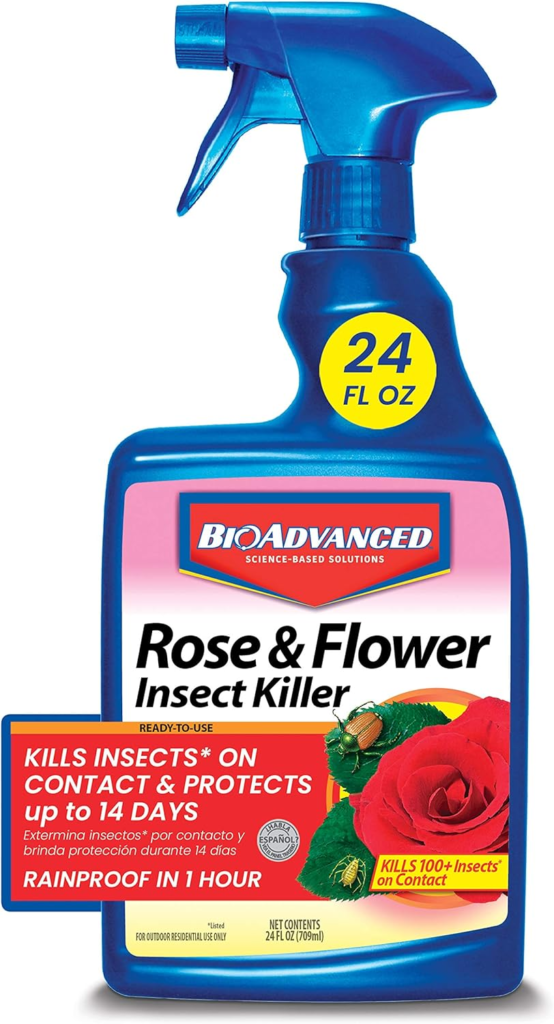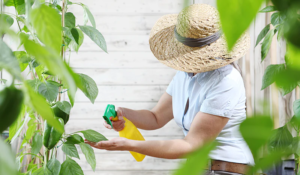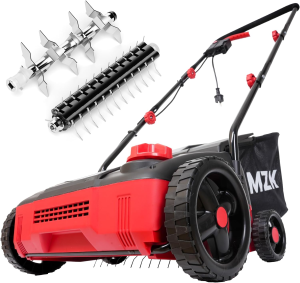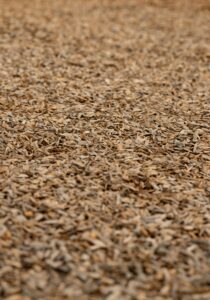WHAT IS ROSE ROSETTE DISEASE?
Rose Rosette Disease (RRD) is like a really bad sickness that affects roses. It’s caused by a tiny bug called an eriophyid mite, which spreads a virus to the roses. This disease makes the roses look weird, with twisted growth, too many thorns, and red leaves and stems. If a rose gets RRD, it can even die.
People have known about RRD since the 1940s, but it’s become a bigger problem lately, especially in places like North America. It’s not picky about which roses it attacks, so all kinds of roses can get sick.
To deal with RRD, gardeners have to do things like cutting off infected parts of the plant, getting rid of the sick parts, and trying to control the mites that spread the disease. Scientists are also trying to find roses that can resist the disease and ways to stop it from spreading.
Rose Rosette Disease can have several effects on rose plants
- Weaker Plants: Infected roses become weaker and less able to handle harsh winter weather.
- Ugly Bushes: The disease can make the bushes look weird and ugly, losing their charm.
- More Prone to Problems: Once infected, roses are more likely to get attacked by other pests and diseases.
- Plant Death: Sadly, if left untreated, Rose Rosette Disease can lead to the death of the infected plants.
What does rose rosette look like?

When your beloved roses catch the dreaded Rose Rosette Disease, they might start showing a few signs, or maybe all of them at once. At first, only a small part of your precious plant might get affected, usually showing up during the early or mid growing season. Keep an eye out for:
- Weird and Wacky Growth: New shoots might look elongated or downright distorted.
- Seeing Red: New growth that’s a bright red and doesn’t change to green like it should.
- Funky Foliage and Flowers: Leaves and flowers might look all bent out of shape or have odd colors.
- Branch Breakdown: Some branches might start dying back.
- Chunky Stems: Stems might thicken up more than usual.
- Thorny Troubles: Your plant might grow way too many thorns, making it a prickly situation.
- Vanishing Act: You might notice your roses losing flowers or leaves, which is never a good sign.

But the biggest giveaway of Rose Rosette Disease is when your lovely roses start sprouting bushy clusters of shoots from the same spot on the plant. It’s like a secret garden gone wild! The leaves might look all twisted or small, and they might even turn red or yellow. And those precious blooms? They might not open up properly or look quite right. It’s all part of this nasty thing called Rose Rosette Disease, also known as witches’ broom. Keep an eye on your garden, and give those roses all the love and care they need!
How to treat rose rosette disease?
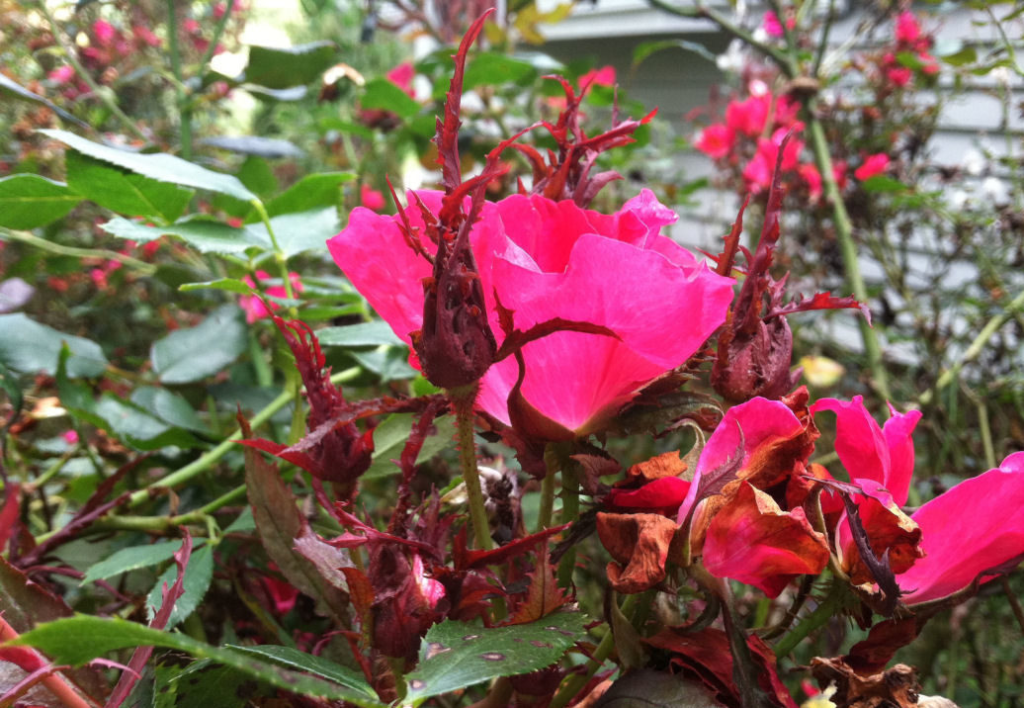
Getting rid of Rose Rosette Disease requires some steps, but don’t worry, I’ll guide you through it!
First things first, you need to confirm if your rose has the disease. Take some photos and show them to your local nursery or extension office. You can even ask a pro to check a small part of the plant. Cut off a piece of the affected area and seal it in a plastic bag to take to the office.
Once you’ve confirmed the disease, it’s time to say goodbye to the infected plant. Sadly, there’s no cure for this disease, and pruning won’t help much. Cover the whole plant with a garbage bag before digging it up, to contain any mites that might still be there. Toss everything in the trash to stop the disease from spreading. Keep an eye on nearby roses for any signs of trouble.
Now, let’s talk about preventing this sneaky disease from coming back!
Since there’s no perfect treatment, prevention is key. Here are some steps you can take:
- Bye-bye Host Plants: If there are any wild roses nearby, get rid of them. You can also work with your community to remove them from public areas. Just be sure to clean your tools and wash up afterward to prevent spreading the mites.
- Prune and Tidy Up: Get rid of old flower buds and seeds where mites like to hang out. Keep doing this throughout the year to keep things clean.
- Find a Cozy Spot: Plant your roses somewhere sheltered from strong winds to keep those mites away.
- Spread Them Out: Don’t plant your roses too close together. Give them some space to breathe.
- Mix It Up: Plant some non-rose plants between your roses to create a barrier against the disease.
- Keep Them Happy: Healthy roses are less likely to get sick. Water them, feed them, and keep an eye out for any other problems.
- No Leaf Blowers: Avoid using leaf blowers in your garden, as they can stir up the air and spread mites around.
- In the other hands: we can make your rose garden more beautiful with this product.
Now, let’s clear up some questions you might have!
- Can you save a rose with Rose Rosette Disease? Sadly, it’s usually a no-go. It’s best to remove the infected plant ASAP to prevent spreading the disease.
- Can you plant roses again after dealing with Rose Rosette Disease? It’s recommended to wait a few years before planting new roses in the same spot to make sure any remaining roots are completely gone.
- Can people get Rose Rosette Disease? Don’t worry, humans can’t catch it. But be careful not to spread those mites around!
- Can rose rosette spread to other types of plants?Rose Rosette Disease specifically targets roses and doesn’t spread to other types of plants directly. However, the tiny mites that carry the disease might hang out on other plants too, though they won’t necessarily make those plants sick with Rose Rosette Disease.
The last message
Dealing with Rose Rosette Disease can be tough, but with the right steps, you can protect your beloved roses and keep your garden thriving. By staying vigilant, taking quick action when needed, and following prevention measures, you can create a beautiful and healthy garden that’s resistant to this pesky disease. Remember, every challenge in the garden is an opportunity to learn and grow, and with determination and care, you can overcome any obstacle nature throws your way. So keep those green thumbs up, stay positive, and enjoy the beauty of your flourishing rose garden!
